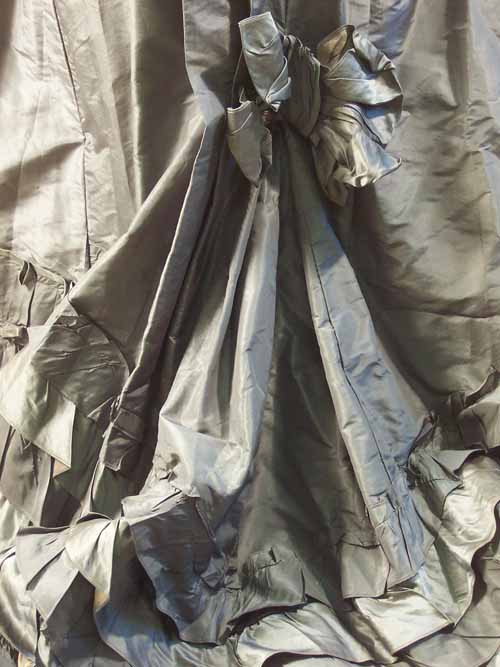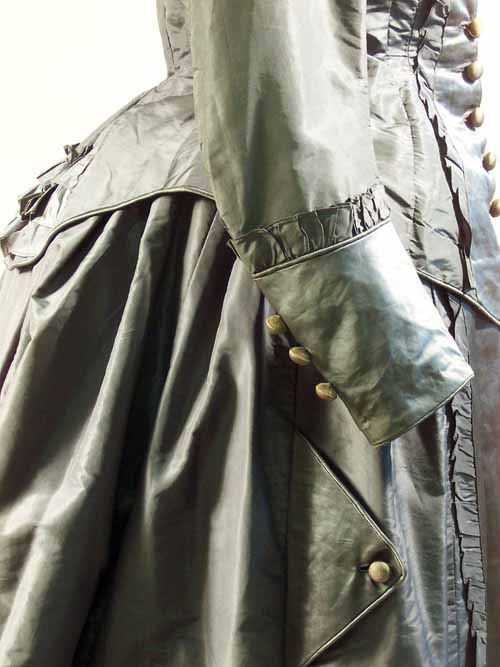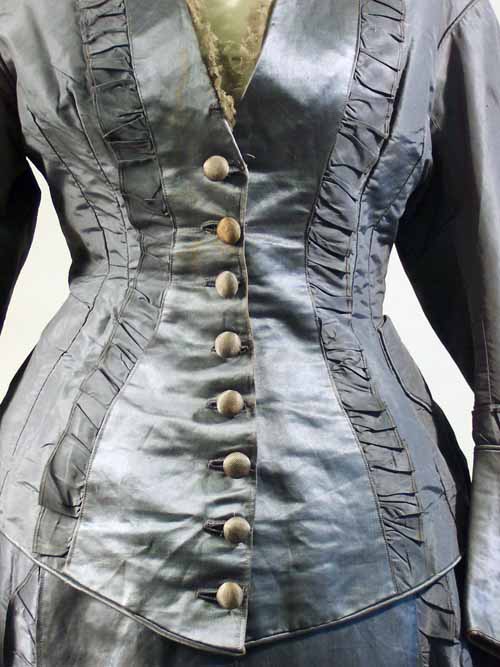dress
Summary
Blue grey silk trimmed with blue satin. Two piece. Bodice lined with white linen. Front fastening with buttons below low narrow V neck (altered from high neck). Front edged with silk frill. Rows of frills at back. Long sleeves with satin faced cuffs with frill. Separate skirt lined with fawn cotton. Fastening left front, trimmed with buttons. Edged with silk frill. Box pleat centre back. Centre back seam open 84cm from hem under bow. Frill at hem.
Display Label
In the 1870's women's dresses were often decorated with an array of pleats, fringing and ruched fabric. These trimmings could be made of ribbon or pleated flounces of the self fabric of the dress or of boldly contrasting materials and colours. If lace was applied, it was often as a thin edging. Widely available from the 1860's, the domestic sewing machine enabled decoration to be created cheaply and quickly. Instead of reducing the amount of time spent constructing a garment, these early sewing machines seem to have been used to create extra trimmings, layers and stitches. Although initially the upper classes favoured the trims and frills, as the sewing machine enabled the middle and labouring classes to buy reasonably priced fashionable clothes, the fashionable elite turned away from excessive trimmings which many viewed as vulgar. The selection of images shown are typical examples of ruching, fringing and pleating from dresses in the 1870's.
Object Name
dress
Date Created
1875-1877
Dimensions
Skirt (max): 157.5cm
Bodice: 64.8cm
Hem: 381cm
Shoulder: 44.5cm
Waist: 73.7cm
Waist: 76.2cm
accession number
1947.4071
Collection Group
Medium
Legal
© Manchester Art Gallery






